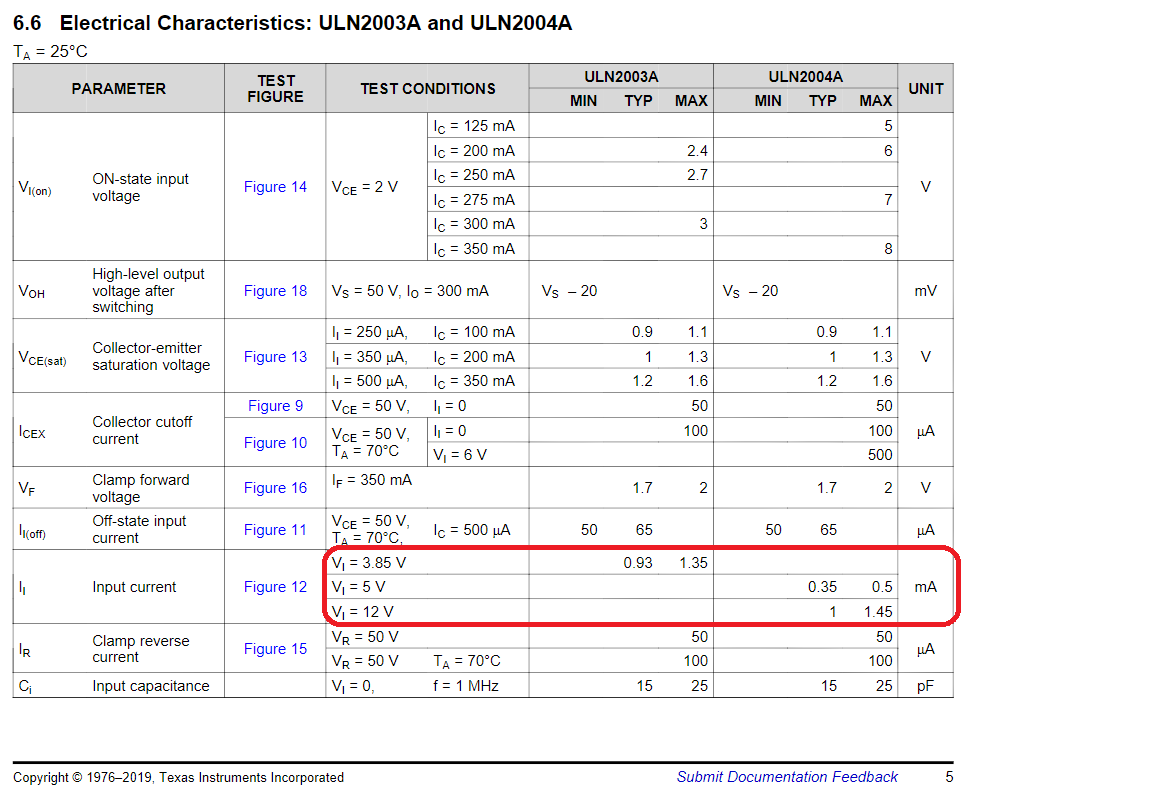Hi team,
My customer has MCU IO output with maximum current of 5mA, and they're wondering if they need to add an external resistor to limit the input current of ULN2003A?
Since the Rb in ULN2003A is only 2.7kohm with 15% variation, and customer concerns about the input current may damage ULN2003A.
Let me know if you have any ideas, thanks!
James




